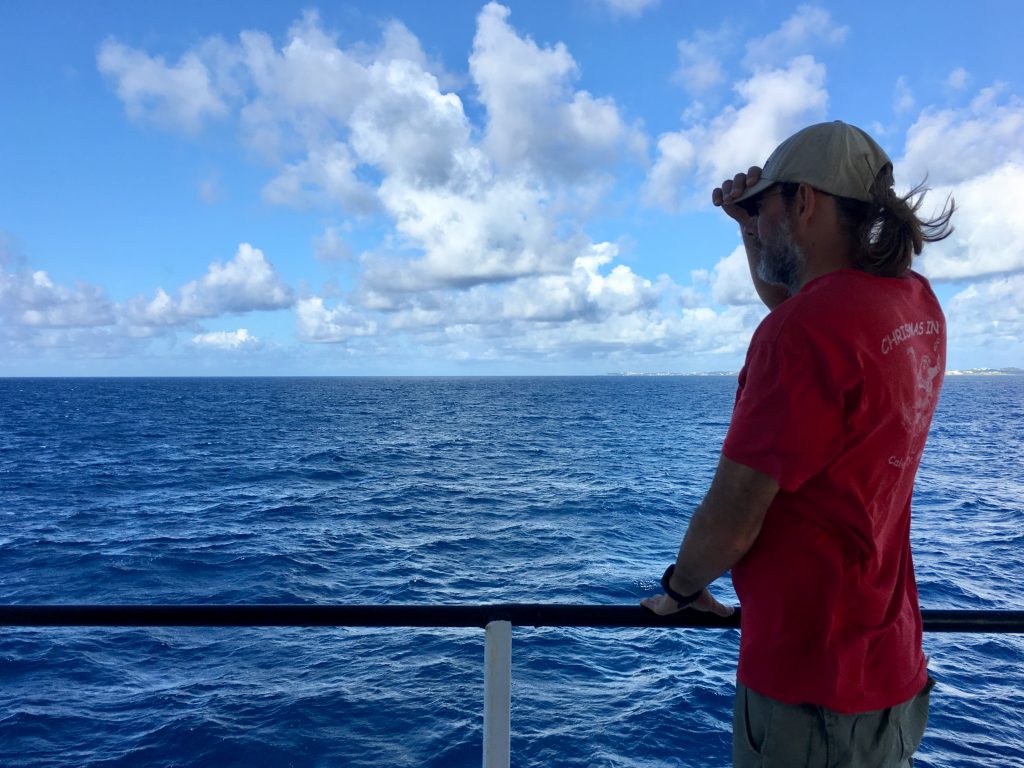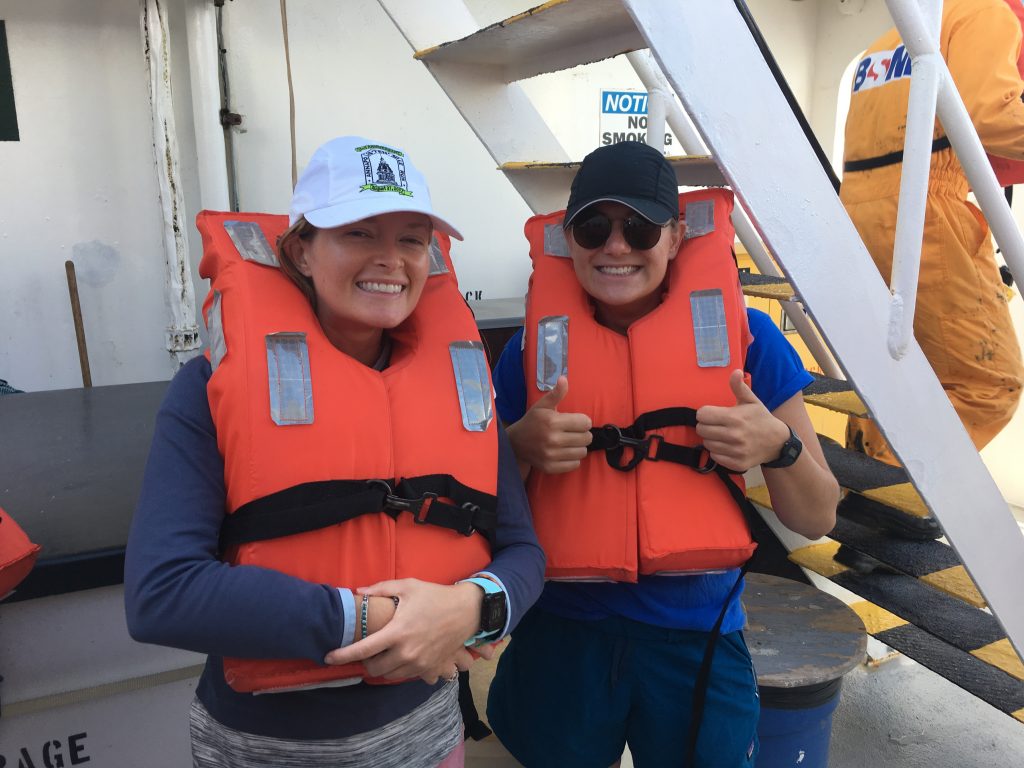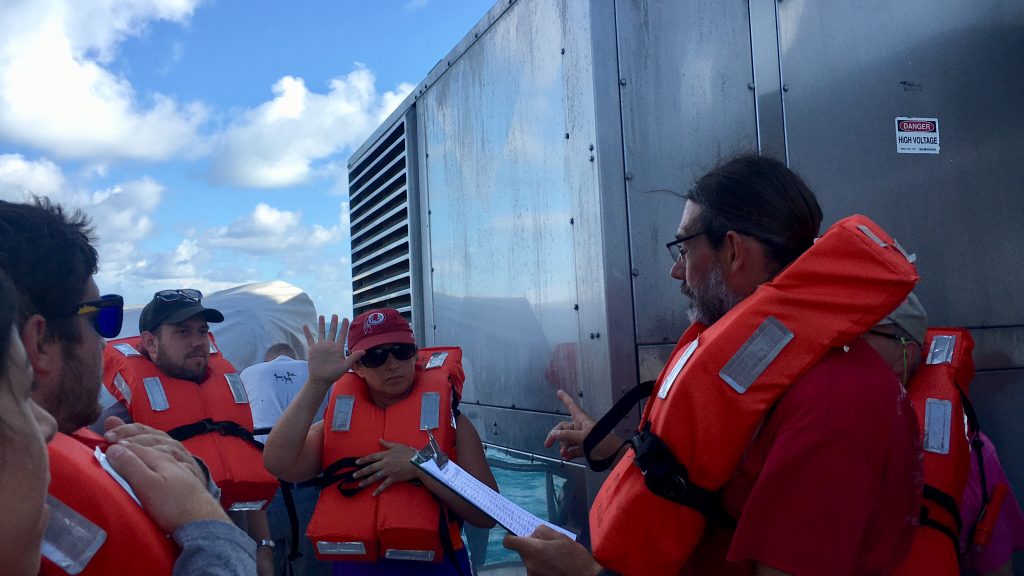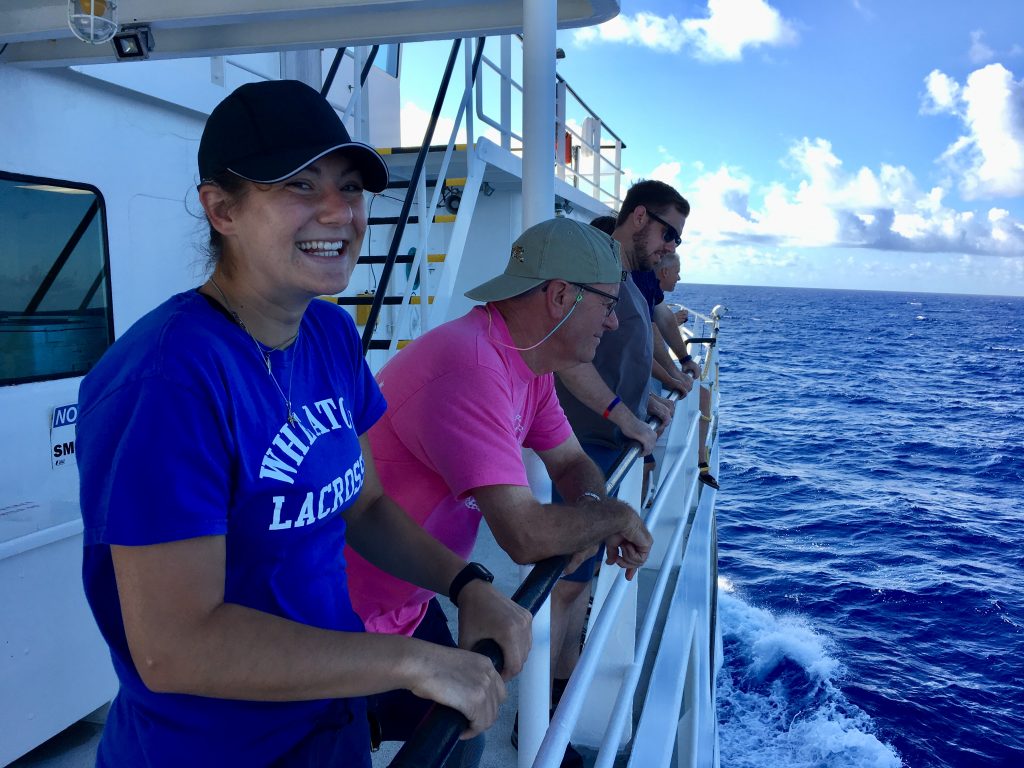Follow along as our scientists conduct research at sea
Finally leaving port!

The rumble of the motors began on time this morning at 7:30 a.m. and sure enough by 8:30 we were pushing off from the dock and heading out to sea.

Soon after we departed from port, four long bells sounded off indicating the start of an abandon ship drill. The quick and easy drill consisted of everyone on board retrieving their life vests from their rooms and congregating at their muster stations. Once everyone on board was accounted for, we travelled up a deck to learn how to properly deploy life rafts in the case of an emergency.
On research cruises safety is of the upmost importance. Prior to departure, we were lectured on different scenarios, like a man overboard or fire in a lab, that may arise and the proper responses. There is already a level of caution necessary for traveling by boat that is just further amplified by having labs with potentially hazardous chemicals on board.

Once we were all properly educated on deploying life rafts, scientists gathered on an upper deck to watch as waves collided with the side of the boat as we sailed away. As we strayed farther from the shore, fly fish could be seen leaping from the waves near the boat, traveling tens of meters away from the boat.

After appreciating the charm of flying fish and observing lines of sargassum seaweed that continued as far as the eye could see, the final lab preparation began. Before samples can be processed the scientists have to make sure every vial, bottle, and tube is sterilized and labeled to be organized and accurate when the process begins.
All that was left to do was wait until the research vessel reached the BATS station to begin the process of collecting samples with the CTD (Conductivity, Temperature, Depth) instrument. Curious about what a CTD is and how these scientists are using it in their research? Check out our next blog post.
